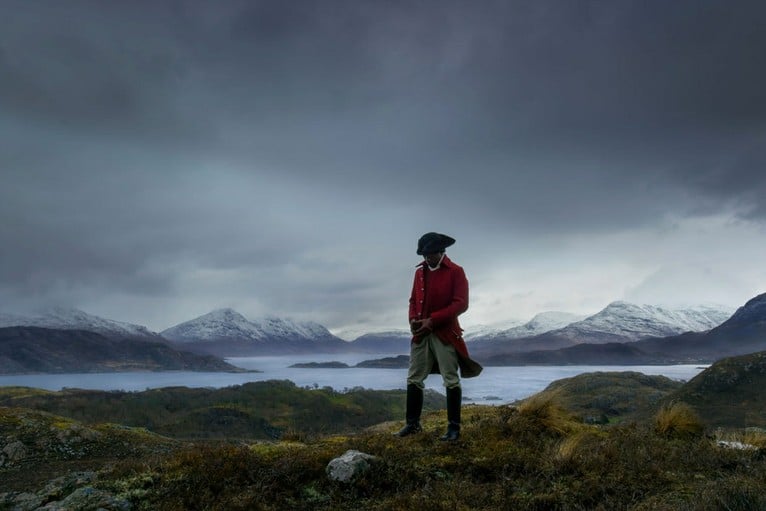Body Of Water: John Akomfrah’s three-screen film installation, Vertigo Sea, at the Arnolfini
April 6, 2016

Collaborating with Bristol’s Natural History Unit and referencing the literary works Moby Dick and Whale Nation, John Akomfrah’s Vertigo Sea marries themes of immigration, ethical identity, and the plight of the whale, to devastating effect.
The 40-minute three-screen installation is at once, sublime, harrowing and thoroughly depressing. Vertigo Sea’s combination of political events concerning immigration and ecological struggles are by design, incorporated to further perpetuate the enigma of its form. To some, the idea of a three-screen video installation may seem needlessly ambitious, but with the film’s organic haunting imagery, even pace and accompanied by slowly evolving, hypnotic soundscapes, the social and environmental motifs penetrate with ease.
Needless to say, it is hard not to be swept up by the fine costume design and long tracking aerial shots of the Norwegian sea. However, the film’s careful and alluring compositions also benefit the more conscious side of Akomforah’s cinematic concerns. This allows the film to effectively and subliminally display its conceited notions of suffering and persecution. Archival footage of news
reports on the death of immigrants are intercut with the film’s opulent yet just as melancholic fictional elements.
[pullquote]<align=”left”> “With the film’s organic
haunting imagery, even pace and accompanied by slowly evolving, hypnotic
soundscapes, the social and environmental motifs penetrate with ease.” [/pullquote]
The inclusion of archival images and sound bites appears to represent Akomfrah’s early auterist style from when working within the Black Audio Film Collective. It successfully permeates his current work and assists in declaring them as didactic pieces whilst retaining their necessary ambiguity. The balancing act of combining universal, natural images with the inhumane and sometimes surreally abstract; has always been a preoccupation of Akomforah’s and with Vertigo Sea the attempt is effortless. Luckily, the themes play into each other, every one offering a subtle commentary on the other, juxtaposing and flourishing in a series of tragic ironies.
It could be said that the three-screen format results in a dense and difficult, sprawling audio-visual poem (much like that of its literary reference points), however, no fault can be found in Akomfrah’s Vertigo Sea, as a political and environmental spectacle, although it requires multiple viewings to devour.

Comments